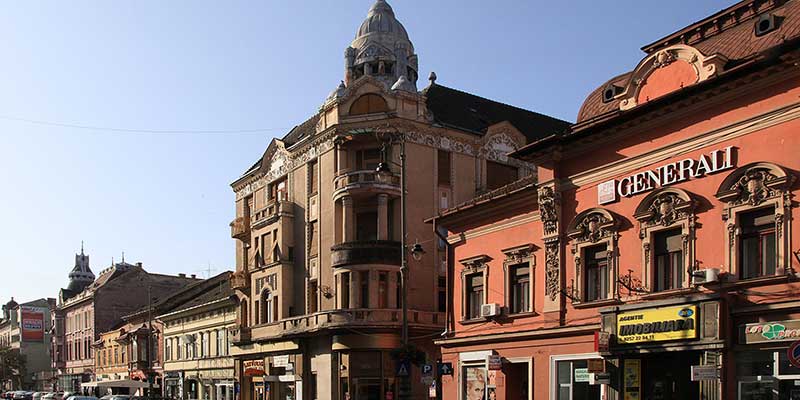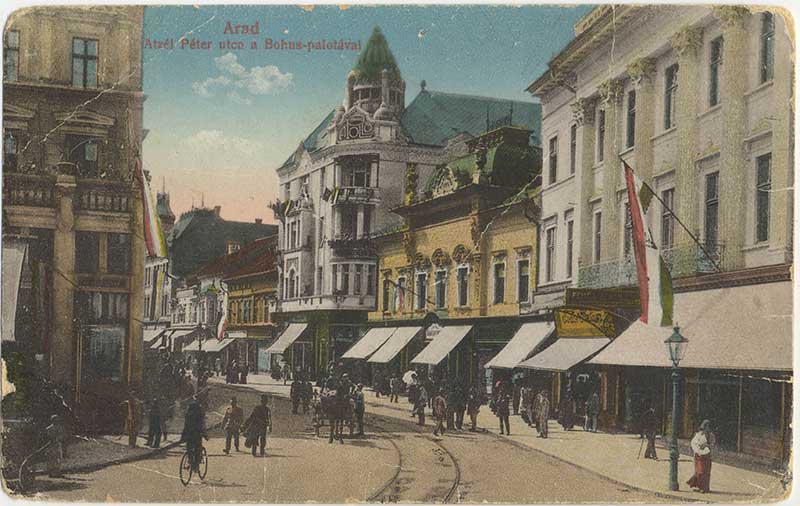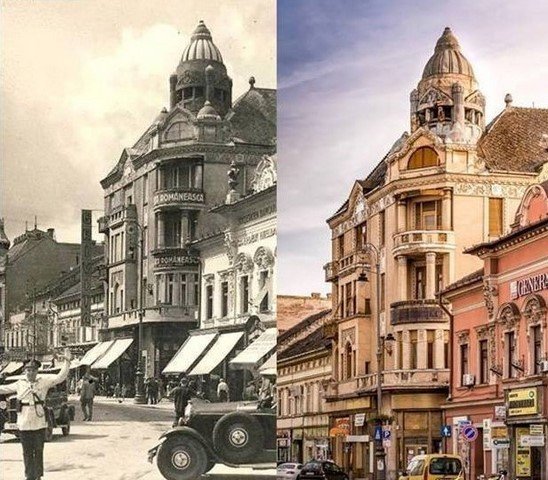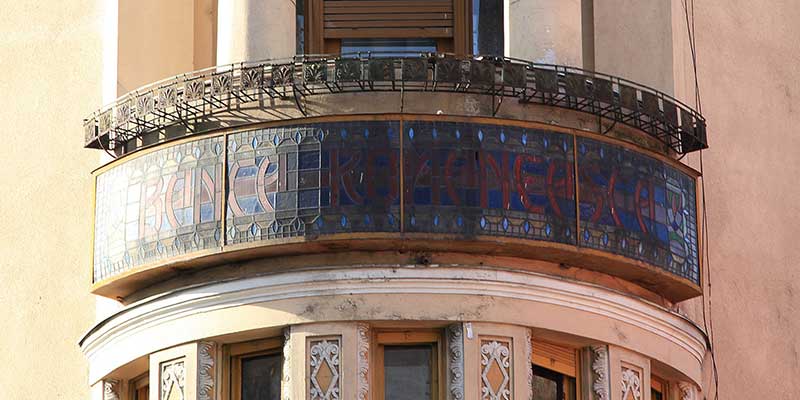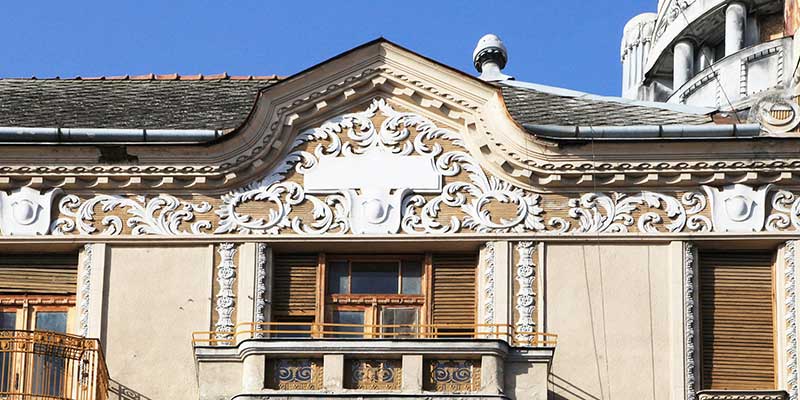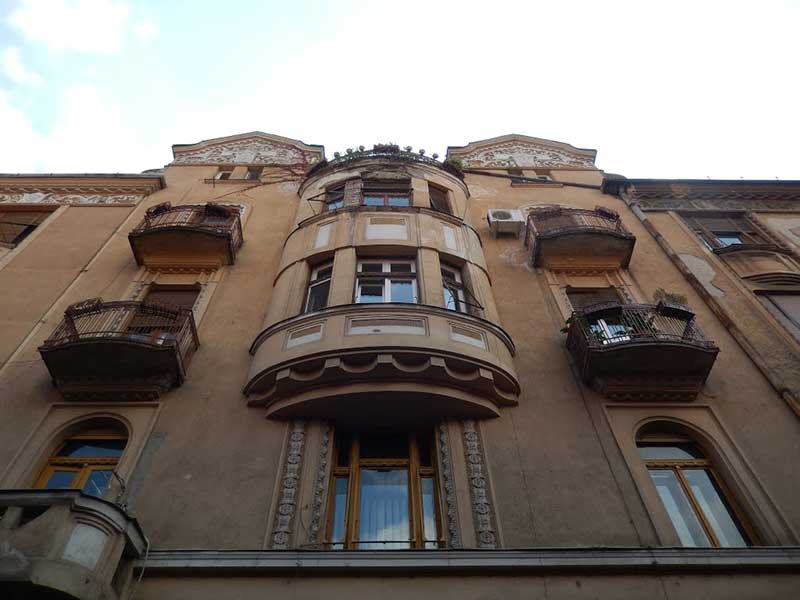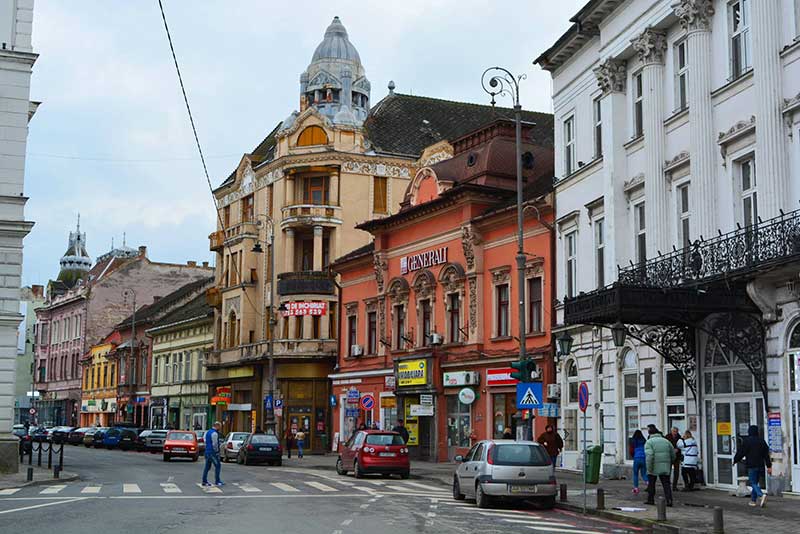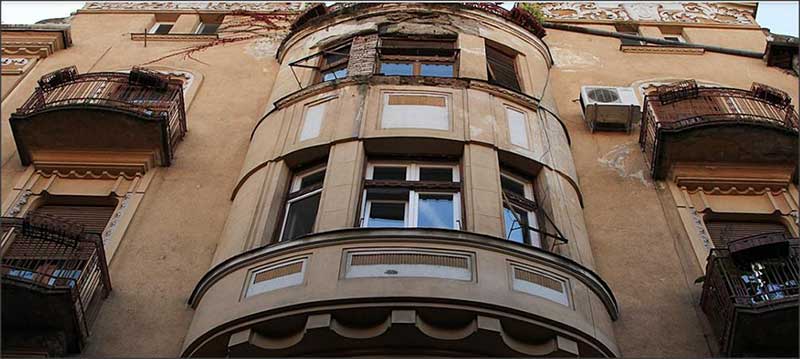Bohus Palace Arad – Summary
The Bohus Palace (Palatul Bohuș) is a four-story, early 20th-century neoclassical style architectural palace located in Arad, Romania. The building is designated as a Romanian historical monument. The palace has served different purposes throughout its decades of history and continues to be one of the largest and most significant buildings in Arad.
The original Bohus Palace was custom built to be the living headquarters for the noble Bohuș family. The Bohuș family trace their roots back to Hungary but have members spread out across the world. The family has relatives living in countries such as the Czech Republic, Slovakia, Romania, Poland, and the United States. At the time of the Palace’s construction in the early 20th century, the Bohuș family was one of the wealthiest and most prominent families living in Arad.
After the Bohus family moved out of the palace, it was converted into and served as a multi-purpose building. Apartments were constructed inside the structure and were made available for rent or purchase. Retail shops, banks, and food services opened up and operated out of the palace. The building also housed Arad’s first movie theater. The Bohuș Palace was Arad’s first multi-purpose establishment to contain such a broad category of businesses.
Bohus Palace Arad – Table of Contents
- Bohus Palace Arad – History
- Bohus Palace Arad – Architecture
- Bohus Palace Arad – Present Day
- Bohus Palace Arad – Video
- Bohus Palace Arad – Visitor Info
Bohus Palace Arad – History
The Bohuș Palace is known as the building which did many things first in Arad. It was truly ahead of its time in innovating design and functionality. The palace was Arad’s first building to use central heating and reinforced concrete floors. It was also one of the first of its period to incorporate full functioning elevators.
Besides being one of the most modern structures of its time, the Bohuș Palace is also known for being the headquarters of a variety of different and unique tenants. Throughout its history, the palace’s luxurious apartments have been called home by some of Romania’s most influential individuals. Previous occupants include writers, artists, musicians, politicians, and businessmen.
In the 1930s the building was home to Banca Românească, Arad’s most successful bank. Banca Românească played a major role in financially supporting the growing Arad industry of the period. The bank also owned numerous shares in nearby factories. On a second-floor balcony of the palace, there still remains an original stained-glass sign with the bank’s name on it.
One of the Bohuș Palace’s most famous previous tenants is the tailor Manase Ghinga. The tailor shop Ghinga operated out of the palace was renowned throughout all of Romania. Ghinga collaborated with the famous painter Sever Frentiu on designing and creating many new, unique, and original styles of clothing.
The tailor shop was visited, from both near and far, by some of the most distinguished people of its day. Ghinga’s shop was responsible for dressing some of the most famous and powerful people. The clothing designed in the shop won countless top, national and international, awards. Many of the garments designed in the shop are on display in the county museum.
Bohus Palace Arad – Architecture
The principal architect of the Bohus Palace was Arad native Ludovic Szántay. Szántay was highly talented and renowned for his works. He was considered the top Architect in Arad, and one of the best in the whole country. Szántay designed some of the most important buildings in Arad. Some of his more famous work includes the Szantay Palace, the Cultural Palace, the Red Church, the Kohn Palace and the Arad Railway Station.
The Bohus Palace was completed in 1910 but didn’t get inaugurated and go into use until three years later in 1913. The building was designed in the shape of a U so that it can be accessed from multiple streets and could contain a large courtyard which would be surrounded by walls on opposite sides. There are various different gates off multiple streets that provide access to the palace.
The building façade contains many beautifully designed windows that have numerous fascinating carved out patterns along their trim. The travertine palace walls are an alluring maroon color and match perfectly with the building’s wooden window frames. The ground level façade also contains a mixture of glazing, travertine and brass ornaments spread out at various intervals across its surface.
The Bohus Palace contains multiple balconies, with stunning brass crafted rails, that extend out from different rooms in the building. There are many plaster decorations and figurines sculpted throughout different portions of the structure. The palace also contains geometric and vegetal stucco, along with ornamental elements of wrought iron and processed brass.
Above the Românul street entrance to the building hangs an antique plaque of the original insurance policy for the building. The policy was provided by what was at the time Romania’s largest insurance company, the famous Dacia Romania society. Surrounding the inside and outside of the building are various fascinating bas-reliefs that were sculpted by the talented Geza Rubletzky who was also a tenant in the palace.
Bohus Palace Arad – Present Day
The Bohus Palace is located in one of the most prime locations in Arad. It sits right in the busy and bustling city center close to many nearby attractions. The palace currently contains a few commercial establishments, museum-style exhibitions, functioning art studios, and occupied apartments.
As in the past, the palace is still a primary choice for local artists. The building’s two art studios are considered some of the best in the area and attract some of the top local and foreign talents. One of the studios is owned by the family of Mihai Takács. Takács is considered to have been one of Romania’s best painters.
The palace’s most famous exhibitions are those of legendary Arad writer Ioan Slavici and that of renowned composer Emil Montia. The Slavici exhibition contains original photographs, manuscripts, books and newspapers owned by him. And the Montia exhibition, in his old work studio, contains his original furniture, piano, violin, scores, folklore collections, and many family photos.
The Bohus Palace’s condition has unfortunately gotten worse throughout the years and is currently in a pretty bad state. The city and owners of buildings within the palace have not invested much in maintaining the palace. The results are obvious when looking at the building. The elevators, which were the first of their day in Arad, are no longer functioning.
The façade of the building is deteriorating and crumbling. The interior has damage from rain which has leaked in through cracks found throughout the building. The building had its basement flooded where 1.5m of water remained for months until it was finally removed. Other signs of damage are apparent throughout many portions of the palace.
Bohus Palace Arad – Video
Bohus Palace Arad – Visitor Information
Location
The Bohus Palace is located in the city of Arad’s city center at the address: Strada Vasile Goldiș 1-3. The palace is found at the corner of Strada Vasile Goldiș (Vasile Goldis Street) and Strada Românului (Romanului Street)
The palace sits in-between two other famous Attractions in Arad. Hotel Ardealul (Arad Hotel) is located across the street and directly to its North, and the Teatrul Clasic Ioan Slavici (Ioan Slavici Classical Theater) is located to the Palace’s east, right across Bulevardul Revoluției.
Visitation
The Bohus Palace mainly contains living quarters in occupied apartments. Visitation is open to tourists who want to view the palace from the outside. Gaining access to the inside of the palace is possible if granted by a tenant.
